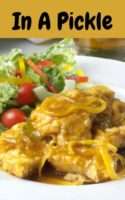Picklefish, a beloved dish in the Cape for Good Friday, has a long and fascinating history. As the name suggests, pickled fish combines fish and spices, creating a unique and flavourful dish. But where did this iconic dish originate, and how did it become a staple of Cape cuisine? From its humble beginnings in the fishing communities of the Cape to its status as a must-try delicacy for visitors, the story of pickled fish is as interesting as the dish itself.
For many Capetonians, Easter just wouldn’t be the same without this scrumptious dish. But contrary to popular belief, its origins aren’t linked to the Christian holiday. According to Tina Smith, Head of Collections at the District Six Museum and lead researcher for the book Huis Kumbuis, pickled fish was originally a Cape Malay dish created to preserve fish in the days before refrigeration. With the Dutch East India Company bringing slaves from various parts of the world, the early Cape Colony became a melting pot of cultures and cuisines, making pickled fish a delicious fusion of flavours.
It wasn’t until much later that pickled fish became associated with Easter. Many people abstained from warm-blooded animals during this time, and fish became the perfect substitute. Today, pickled fish is enjoyed by both South African Muslims and Christians and can be found in many restaurants and stores. However, if you’re in Cape Town, locals will give you the side-eye if they hear you’ve bought it. Pickled fish is best made at home and shared with loved ones around the dinner table.
“Our recipes and the preparation is our intellectual capital. It is the knowledge that creates community and preserves culture,” says Smith . With everyone having their own take on this classic dish, sharing it is more than just about the food – it’s about celebrating and preserving culture. So next time you’re in Cape Town, try pickled fish and experience a piece of local history on your plate.
Tell us: What other traditional dishes, like Cape Town’s pickled fish, have fascinating histories and cultural significance?


